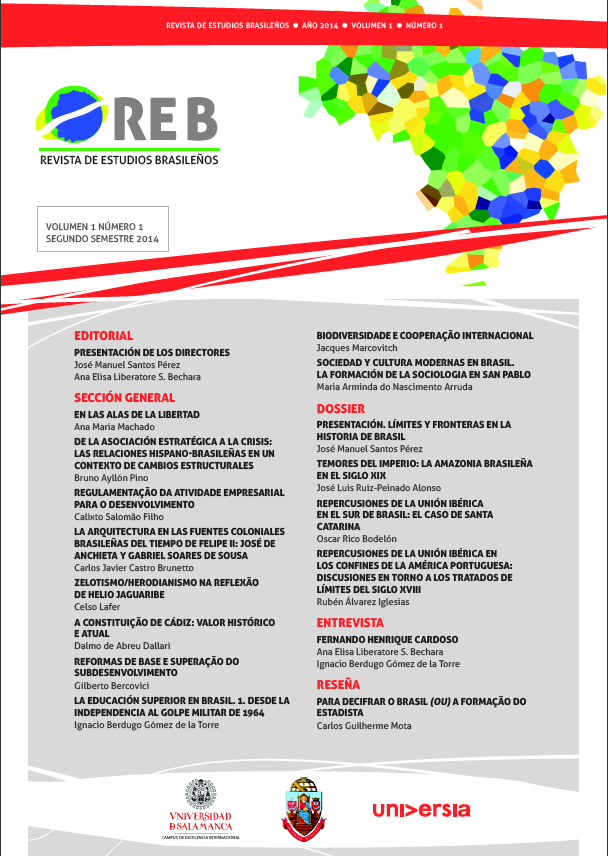The architecture of Brazilian colonial sources in the time of Felipe II: José de Anchieta and Gabriel Soares de Sousa
DOI:
https://doi.org/10.3232/REB.2014.V1.N1.04Keywords:
Brazilian Art, Iberian Union, Art of the 16th century in Brazil, Brazilian Architecture, José de Anchieta, Gabriel Soares de SousaAbstract
Architecture was born in Brazil during the second half of the 16th century. While in Europe there were frequent intellectual debates and discussions about art, in this land of South America they were interested in fortifying the territory, fighting the hostile Indians and creating a complex system for the exploitation of the riches of the colony thanks to slave labor. In this context, the architecture was not an aesthetic purpose, but a necessity to meet the demand of fortifications, churches and domestic buildings. Therefore no specific texts on how architecture should be in the colony were written, although the architecture appears in many documents as a secondary reference. The passage of time and the little interest in preserving the ancient texts, obscured the knowledge of the art of that time. However, under the reign of Felipe II in Brazil, during the Iberian Union, two characters, José de Anchieta and Gabriel Soares de Sousa, intervened as chroniclers of their time. The light that their written works shed, collaborates with the knowledge of Brazil in the late 16th century and the importance architecture had as a Lusitanian identity sign in the giant tropical colony.Downloads
Download data is not yet available.
Downloads
Issue
Section
General Section
How to Cite
The architecture of Brazilian colonial sources in the time of Felipe II: José de Anchieta and Gabriel Soares de Sousa. (2014). Revista De Estudios Brasileños, 1(1). https://doi.org/10.3232/REB.2014.V1.N1.04


